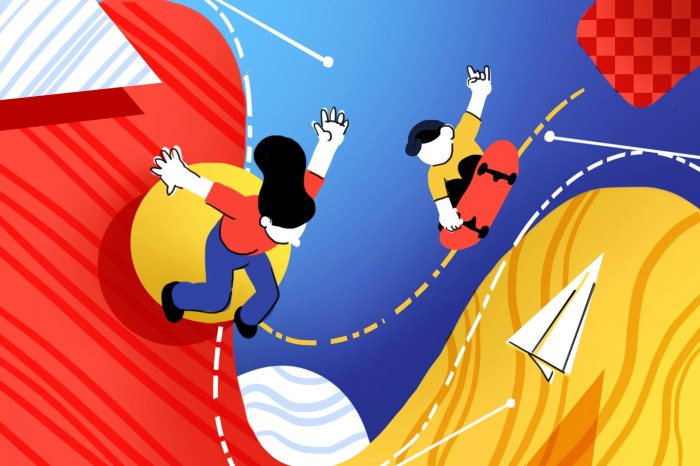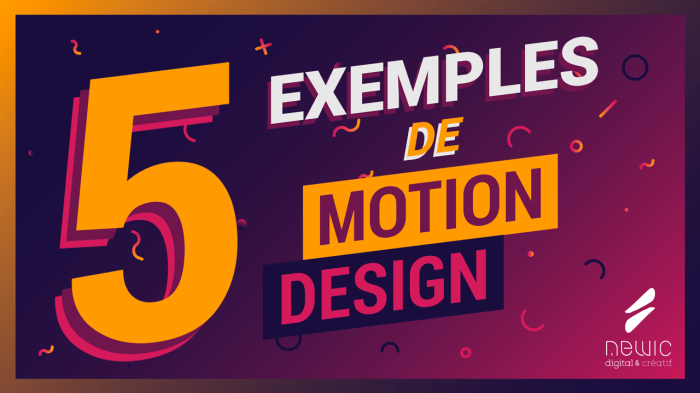Crafting Compelling Motion Design: A Journey into Visual Storytelling
Motion design breathes life into static visuals, infusing them with movement and emotion to captivate audiences. From the fluidity of animation to the seamless transitions in UI/UX, motion design is a powerful tool in the realm of visual communication. Let's delve into the world of motion design and uncover its secrets.
Overview of Motion Design
Motion design is a form of visual communication that uses animation and graphic design principles to create engaging and dynamic content. It plays a crucial role in conveying complex ideas, enhancing storytelling, and capturing audience attention in various mediums.
Key Elements of Motion Design
- Timing: The precise control of when elements appear, move, and disappear to create a sense of rhythm and flow.
- Spacing: The arrangement of elements in relation to each other and the overall composition to guide the viewer's focus and enhance visual appeal.
- Rhythm: The pattern and pace of movement that influences the viewer's perception and emotional response to the content.
Examples of Motion Design in Various Mediums
Motion design can be found in:
- Film: Opening credits sequences, special effects, and animated sequences within live-action films.
- Animation: Character animations, motion graphics, and visual effects in animated movies, TV shows, and online content.
- UI/UX: Animated transitions, microinteractions, and visual feedback in user interfaces and digital experiences.
- Advertising: Animated commercials, explainer videos, and interactive ad campaigns that grab attention and communicate messages effectively.
Principles of Motion Design

Motion design relies on several key principles to create engaging and impactful animations. These principles help designers effectively communicate ideas and emotions through movement. Let's explore some of the fundamental principles of motion design and how they contribute to storytelling and engagement.
1. Anticipation
Anticipation is a crucial principle in motion design that involves preparing the audience for an upcoming action. By incorporating subtle cues or movements before the main action, designers can create anticipation and build interest. For example, in an animated character jumping, a slight crouch before the leap can signal to viewers that something exciting is about to happen.
2. Staging
Staging in motion design refers to the careful arrangement of elements within a scene to guide the viewer's attention and focus. Designers use staging to emphasize key actions or information, leading the audience through the narrative. By strategically placing objects or characters in a composition, designers can direct the viewer's gaze and enhance the overall storytelling experience.
3. Follow-Through and Overlapping Action
Follow-through and overlapping action are principles that add realism and fluidity to animations. Follow-through involves the continuation of movement after the main action is completed, while overlapping action refers to the sequential movement of different parts of an object or character.
These principles help create natural and dynamic animations that mimic real-world physics and enhance the audience's connection to the content.
4. Exaggeration
Exaggeration is a key principle in motion design that involves amplifying movements or expressions to convey emotions or ideas more effectively. By exaggerating certain actions or features, designers can emphasize key points and create engaging visuals that capture the viewer's attention.
This principle is often used in character animations to convey personality traits or comedic elements.These principles of motion design play a vital role in elevating animations and making them more engaging and memorable. By applying these principles effectively, designers can craft compelling stories and foster deeper connections with their audience.
Tools and Software for Motion Design
When it comes to motion design, having the right tools and software is crucial for creating stunning visual effects and animations. Let's explore some popular options used in the industry and their importance.
Popular Tools and Software
Several tools and software are widely used in motion design, each offering unique features and capabilities. Here are some of the most popular ones:
- Adobe After Effects: Known for its versatility and robust features, After Effects is a staple in the motion design industry. It allows for seamless integration with other Adobe products and offers a wide range of effects and plugins for creating captivating animations.
- Cinema 4D: This software is popular for its advanced 3D modeling and animation capabilities, making it ideal for creating complex visual effects and motion graphics. It is often used in conjunction with After Effects for a more comprehensive design workflow.
- Blender: An open-source 3D creation suite, Blender is favored for its powerful modeling, animation, and rendering tools. It is a cost-effective option for motion designers looking to create high-quality animations without breaking the bank.
Importance of Mastering Motion Design Tools
Mastering these tools and software is essential for a successful career in motion design. By becoming proficient in programs like After Effects, Cinema 4D, and Blender, designers can unlock their full creative potential and bring their visions to life with precision and efficiency.
Additionally, proficiency in these tools can open up opportunities for collaboration with other professionals in the industry and enhance the quality of the final output.
Techniques for Effective Motion Design

Motion design involves various techniques that contribute to creating visually appealing and engaging animations. Let's explore some key techniques that can enhance the quality of motion graphics projects.
Easing
Easing is a technique used to control the acceleration and deceleration of animated elements, creating more natural and smooth movements. By adjusting easing curves, designers can ensure that transitions feel realistic and visually pleasing.
Keyframing
Keyframing is a fundamental technique in motion design that involves setting keyframes to define the starting and ending points of an animation. By adjusting keyframe properties such as position, scale, rotation, and opacity, designers can create dynamic and engaging motion sequences.
Masking
Masking is a technique used to reveal or hide specific parts of an image or animation. By using masks, designers can create complex visual effects, transitions, and animations that add depth and visual interest to motion graphics projects.
Typography, Color, and Composition
Typography, color, and composition play a crucial role in creating compelling motion graphics. The choice of typography sets the tone and style of the design, while color schemes and composition help to establish visual hierarchy and convey the intended message effectively.
Creating Seamless Transitions
To create seamless transitions and animations in motion design projects, designers should pay attention to timing, easing, and continuity. Smooth transitions between scenes, consistent easing curves, and cohesive visual elements contribute to a polished and professional-looking final product.
Last Word
As we conclude our exploration of motion design, we are reminded of its ability to elevate storytelling and engagement through dynamic visuals. The fusion of creativity and technology in motion design opens doors to endless possibilities, shaping the future of visual communication.
General Inquiries
What is the significance of timing in motion design?
Timing in motion design is crucial as it determines the pace and rhythm of movement, influencing how viewers perceive and engage with the visuals.
How do easing and keyframing contribute to effective motion design?
Easing and keyframing help create smooth transitions and realistic movements in motion graphics, adding depth and realism to the overall design.
Why is mastering software like Adobe After Effects important for a career in motion design?
Mastering software like Adobe After Effects is essential for executing complex animations and effects, showcasing technical proficiency and creativity in motion design projects.